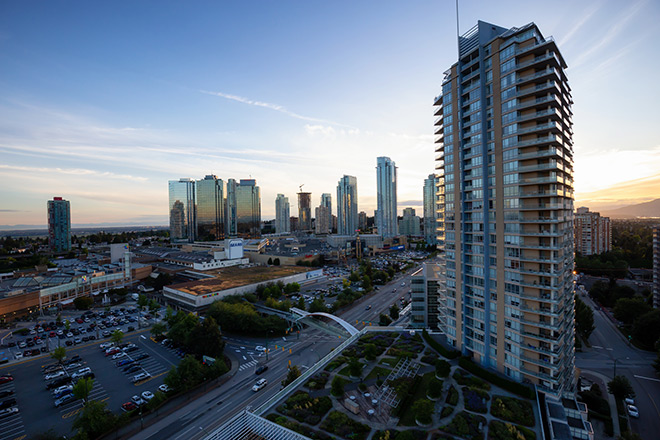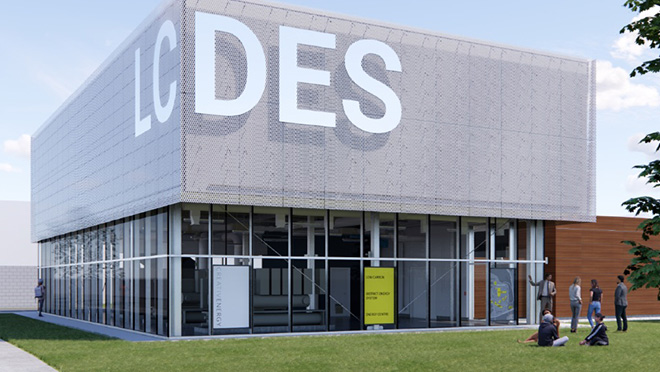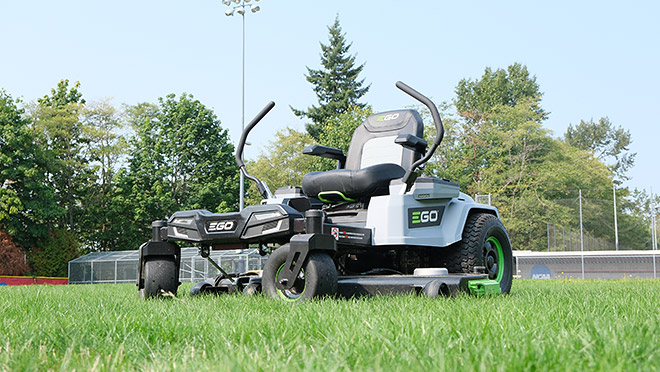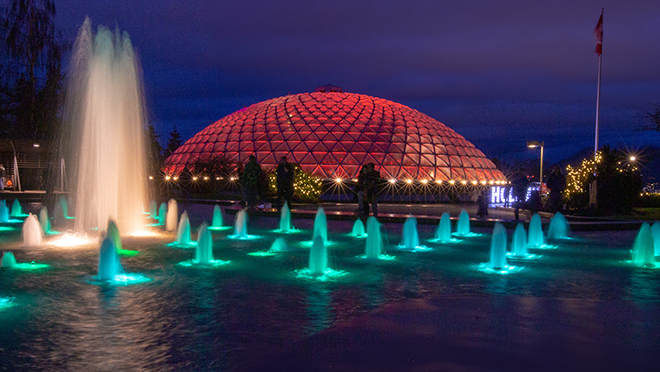Powerful, quiet electric tugs come to Vancouver harbour
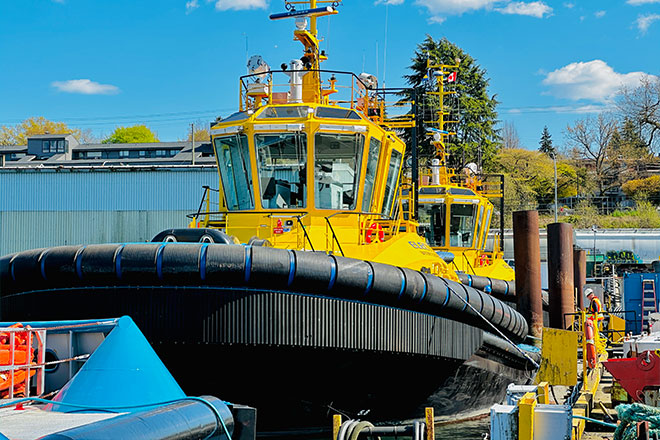
SAAM Towage leans on clean energy in quest to 'do something different'
Part of a series on BC Hydro Clean Energy Champions: businesses, homes, and institutions – large and small – recognized for reducing their reliance on fossil fuels.
Tugboat captains master the feel of the power surge, a diesel combustion fury of torque, shudder and smoke that rattles the bones and provides the torque to tow ships up to more than three football fields in length.
But what if you could do that work without all the noise and carbon emissions?
Look out into Vancouver's inner harbour during slack tide later this year and you might just see two yellow SAAM Towage electric tugs joining forces to tow a massive ship into or out of a berth at North Vancouver's Neptune Terminals. With less than 10 in use worldwide, the tugs are powered by renewable power and will cut greenhouse gas emissions by an estimated 2,400 tonnes a year.
In March, SAAM Towage Canada president Sander Bikkers was aboard one of the electric tugs for a test run. He likened it to the feel of a first drive in an electric car.
"To get to full power, a conventional tug takes anywhere between 20 and 27 seconds," says Bikkers. "And in order to do that, it starts to bellow and vibrate, making a lot of noise and using a lot of fuel. In our test, I was amazed that it took only 11 seconds to get to full power with almost zero vibration."
SAAM Towage operates more than 20 tugs along B.C.'s west coast, and a lot of them are nearing their end of life. Rather than replacing them all with conventional diesel engines, or even diesel-liquefied natural gas hybrids, the company decided in 2019 to give the electric tug a go. And they found both a designed-in-Canada solution in the ElectRA 2300SX tug, the work of Vancouver-based Robert Allan Ltd., and a willing minerals export partner in Teck Resources.
The tugs were purchased via an agreement between SAAM, Teck, and Neptune Terminals as part of a collaboration to both reduce GHG emissions and cut underwater noise. Teck uses berth No. 1 at Neptune and was attracted to the idea in large part to support their lofty climate action goal of reducing emissions along its supply chain by 40% by 2030.
The SAAM Volta, and a second tug that will be named at a later date after further consultation with the Tsleil Waututh Nation, will soon start doing the lion's share of work at the terminal.
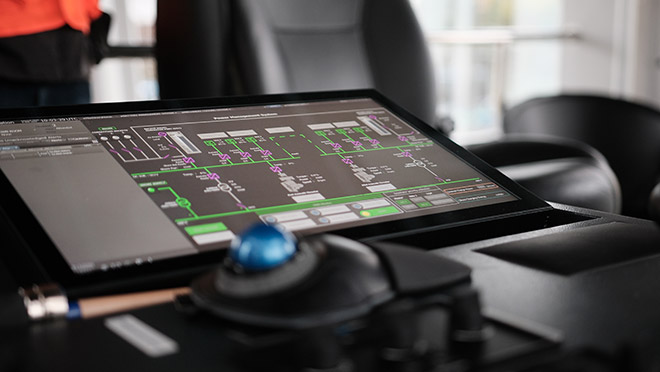
B.C.'s ports plugging into electric power in various ways
Within the next few years, there will be at least five electric tugs operating in B.C. waters, including three used by HaiSea Marine – owned and operated by Seaspan in partnership with the Haisla Nation – at LNG Canada's new export facility in Kitimat. But electrification at B.C. ports isn't limited to tugboats. Since 2019, we've been working to serve up "shore power" to allow berthed ships to plug into our grid and avoid using their diesel-powered auxiliary engines.
Shore power at the Port of Vancouver now powers cruise ships at Canada Place, along with ships at Centerm and Deltaport container terminals, to the tune of a combined 30,000 tonnes of greenhouse gas savings since 2009. The Port of Prince Rupert has also been plugging into shore power since late 2022.
SAAM Towage leaned on us to produce a reliable supply of power at its dock on the south side of Burrard Inlet. This involved upgrading power at the site to a new three-megawatt service that would allow both of SAAM's electric tugs to charge at the same time.
The tugs have a four-hour run time on battery power, which allows them to work in tandem during the two active periods for tugboats: slack tides at low and high water. While higher-powered tugboats used to escort ships through B.C. waters remain diesel or dual-fuel diesel-LNG, the electric version of the harbour tug is ideally suited for inner harbours like those around Vancouver.
"The type of tug you choose will depend on the type of work you want to do and the layout of the port," says SAAM's Bikkers. "And if you look at the Port of Vancouver, most of the work, about 70%, happens between the Lions Gate and Ironworkers Memorial bridges. Tugs can be seen as the guardians of the Port of Vancouver, to make sure that everything stays safe."
ESG, and the vision of a green tug, got things rolling
Bikkers said that before ESG (environmental, social, governance) became a common acronym in corporate boardrooms, SAAM was exploring ways to deliver on ESG policies, with an emphasis on the E.
"We wanted to do something different," said Bikkers. "I vividly remember that as we started making that plan, a group of us – not including me – painted a big green tug in the heart of a painting. And we said this is the way we should differentiate ourselves."
SAAM didn't have to look far for technical expertise in tugboats. Robert Allan Ltd., a privately-owned Vancouver firm of consulting naval architecs and marine engineers has been designing boats for the maritime industry since 1928. The tugboats were built at famed Sanmar Shipyards in Turkey and arrived in Vancouver after a long 60-day voyage.
And the collaboration between SAAM and BC Hydro has just begun.
"The intent is to build a new concrete dock that will be future-proofed for further marine electrification in the next year or so, and that will have a permanent solution to charge the vessels," says Cory Farquharson, BC Hydro key account manager working with SAAM. "We'll help them with a study analysis and work on implementation funding to support electrified tugs in B.C."
Just how soon SAAM be able to expand its electric tug fleet will depend in part on how quickly costs of the new electric tugs are reduced. The first Tesla electric car sold in Canada started at $125,000, while today's bestselling Model 3 starts at $54,000 before rebates. Bikkers says the ElectRA 2300SX tug is about 70% more expensive than a diesel tug, and that he expects it will take at least five years for the costs to come down significantly.
SAAM has already ordered an electric tug for operations at a port in Chile, and sees the potential for tugs in other ports in B.C., possibly including operations in eco-sensitive areas such as Port McNeill at the northern tip of Vancouver Island, where quieter tugs could be a big advantage. But for now, the best fit is in Vancouver's inner harbour, which offers optimal conditions for harbour tug operation and promising support from the likes of Teck, Neptune, CleanBC and BC Hydro.
"BC Hydro really stepped up and put everything in place to make this initiative happen," says Bikkers. "And it's great that the government decided that this project will receive funding to help cover some of the additional costs of going electric, and to ensure this encourages others to keep thinking about alternative fuels in the marine industry."

